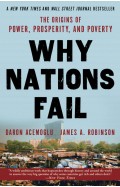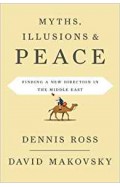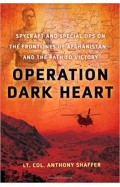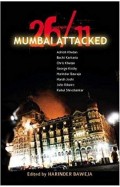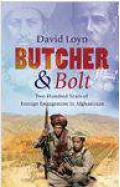The Arab Uprisings: What Everyone Needs to Know
By: James L. Gelvin
-
Rs 1,421.25
- Rs 1,895.00
- 25%
You save Rs 473.75.
Due to constant currency fluctuation, prices are subject to change with or without notice.
In an engaging question-and-answer format, The Arab Uprisingsexplores all aspects of the revolutionary protests that have rocked the Middle East. Historian James Gelvin begins with an overview-What sparked the Arab uprisings? Where did the demands for democracy and human rights come from? How appropriate is the phrase "Arab Spring"? -before turning to specific countries around the region. He looks at such topics as the role of youth, labor, and religious groups in Tunisia and Egypt and discusses why the military turned against rulers in both countries. Exploring the uprisings in Libya and Yemen, Gelvin explains why these two states are considered "weak," why that status is important for understanding the upheavals there, and why outside powers intervened in Libya but not in Yemen. Next, Gelvin compares two cases that defied expectations: Algeria, which experts assumed would experience a major upheaval after Egypt's, and Syria, which experts failed to foresee. He then looks at the monarchies of Morocco, Jordan, and the Gulf, exploring the commonalities and differences of protest movements in each. The final chapter discusses the implications of the uprisings. What do they mean for the United States? For Iran? Has al-Qaeda been strengthened or weakened? What effects have the uprisings had on the Israel-Palestine conflict? What conclusions might we draw from the uprisings so far?
For anyone wishing to understand the dramatic events in the Middle East, The Arab Uprisings is the place to turn.
| Book | |
| What's in the Box? | 1 x The Arab Uprisings What Everyone Needs to Know |
In an engaging question-and-answer format, The Arab Uprisingsexplores all aspects of the revolutionary protests that have rocked the Middle East. Historian James Gelvin begins with an overview-What sparked the Arab uprisings? Where did the demands for democracy and human rights come from? How appropriate is the phrase "Arab Spring"? -before turning to specific countries around the region. He looks at such topics as the role of youth, labor, and religious groups in Tunisia and Egypt and discusses why the military turned against rulers in both countries. Exploring the uprisings in Libya and Yemen, Gelvin explains why these two states are considered "weak," why that status is important for understanding the upheavals there, and why outside powers intervened in Libya but not in Yemen. Next, Gelvin compares two cases that defied expectations: Algeria, which experts assumed would experience a major upheaval after Egypt's, and Syria, which experts failed to foresee. He then looks at the monarchies of Morocco, Jordan, and the Gulf, exploring the commonalities and differences of protest movements in each. The final chapter discusses the implications of the uprisings. What do they mean for the United States? For Iran? Has al-Qaeda been strengthened or weakened? What effects have the uprisings had on the Israel-Palestine conflict? What conclusions might we draw from the uprisings so far?
For anyone wishing to understand the dramatic events in the Middle East, The Arab Uprisings is the place to turn.
The Arab Uprisings: What Everyone Needs to Know
By: James L. Gelvin
Rs 1,421.25 Rs 1,895.00 Ex Tax :Rs 1,421.25
Zubin Mehta: A Musical Journey (An Authorized Biography)
By: VOID - Bakhtiar K. Dadabhoy
Rs 630.00 Rs 1,050.00 Ex Tax :Rs 630.00
Why Nations Fail The Origins of Power Prosperity and Poverty
By: James A. Robinson
Rs 2,335.50 Rs 2,595.00 Ex Tax :Rs 2,335.50
The Lean Startup How Constant Innovation Creates Radically Successful Businesses
By: Eric Ries
Rs 3,495.00 Ex Tax :Rs 3,495.00
Myths Illusions and Peace: Finding a New Direction for America in the Middle East
By: Dennis Ross
Rs 985.50 Rs 1,095.00 Ex Tax :Rs 985.50
Operation Dark Heart: Spycraft And Special Ops On The Frontlines Of Afghanistan And The Path To Victory
By: Anthony Shaffer
Rs 2,025.00 Rs 2,250.00 Ex Tax :Rs 2,025.00
Anna Hazare: The Face Of Indias Fight Against Corruption
By: Pradeep Thakur
Rs 270.00 Rs 300.00 Ex Tax :Rs 270.00
How To Win A Cosmic War God Globalization And The End Of War
By: Reza Aslan
Rs 625.50 Rs 695.00 Ex Tax :Rs 625.50
Why Nations Fail The Origins of Power Prosperity and Poverty
By: James A. Robinson
Rs 2,335.50 Rs 2,595.00 Ex Tax :Rs 2,335.50
The Lean Startup How Constant Innovation Creates Radically Successful Businesses
By: Eric Ries
Rs 3,495.00 Ex Tax :Rs 3,495.00
No recently viewed books available at the moment.
Zubin Mehta: A Musical Journey (An Authorized Biography)
By: VOID - Bakhtiar K. Dadabhoy
Rs 630.00 Rs 1,050.00 Ex Tax :Rs 630.00
The Arab Uprisings: What Everyone Needs to Know
By: James L. Gelvin
Rs 1,421.25 Rs 1,895.00 Ex Tax :Rs 1,421.25
Why Nations Fail The Origins of Power Prosperity and Poverty
By: James A. Robinson
Rs 2,335.50 Rs 2,595.00 Ex Tax :Rs 2,335.50
The Lean Startup How Constant Innovation Creates Radically Successful Businesses
By: Eric Ries
Rs 3,495.00 Ex Tax :Rs 3,495.00













-120x187.jpg?q6)








